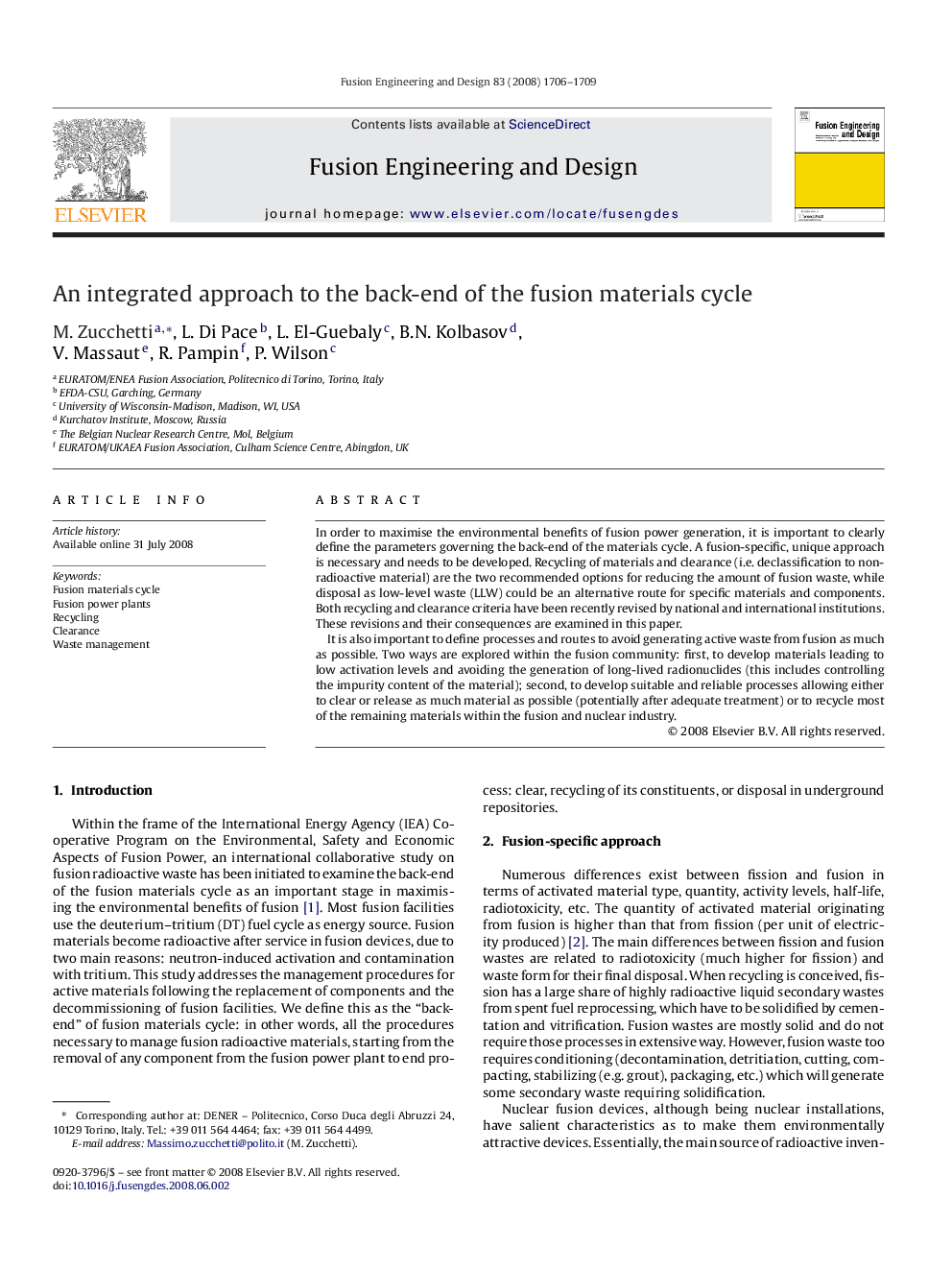| Article ID | Journal | Published Year | Pages | File Type |
|---|---|---|---|---|
| 272784 | Fusion Engineering and Design | 2008 | 4 Pages |
In order to maximise the environmental benefits of fusion power generation, it is important to clearly define the parameters governing the back-end of the materials cycle. A fusion-specific, unique approach is necessary and needs to be developed. Recycling of materials and clearance (i.e. declassification to non-radioactive material) are the two recommended options for reducing the amount of fusion waste, while disposal as low-level waste (LLW) could be an alternative route for specific materials and components. Both recycling and clearance criteria have been recently revised by national and international institutions. These revisions and their consequences are examined in this paper.It is also important to define processes and routes to avoid generating active waste from fusion as much as possible. Two ways are explored within the fusion community: first, to develop materials leading to low activation levels and avoiding the generation of long-lived radionuclides (this includes controlling the impurity content of the material); second, to develop suitable and reliable processes allowing either to clear or release as much material as possible (potentially after adequate treatment) or to recycle most of the remaining materials within the fusion and nuclear industry.
